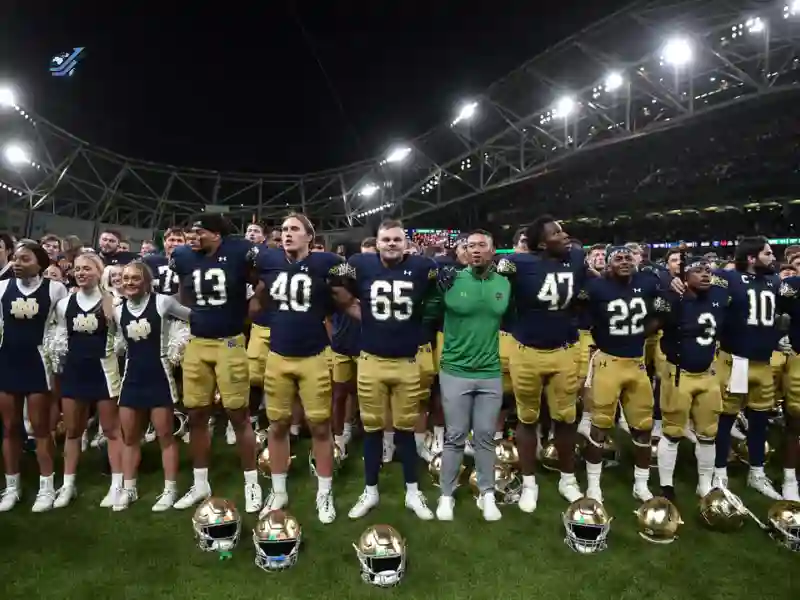Across the United States no fall weekend feels complete without roaring stadiums marching bands and the excitement that only one sport can deliver—College Football. This sport has become a backbone of American athletics shaping communities inspiring traditions and producing legendary athletes. Whether you’re in a packed stadium or watching from your couch the energy is impossible to ignore.
What is It All About
College Football is played by student-athletes representing universities and colleges. Managed by the NCAA it began over a century ago and has since become a multi-billion-dollar industry. Its more than entertainment—its a platform for education exposure and athletic excellence.
NCAA Football and Its Structure
The NCAA oversees the organization of the sport into three divisions: I II and III. Division I is the most competitive and even within it theres a split between FBS and FCS. FBS schools typically have larger budgets and fanbases often competing in high-stakes postseason games. FCS schools operate on smaller scales but maintain fierce competition and loyal followings.
Understanding Division 1 Football
Being part of Division 1 means intense training strict schedules and national attention. The FBS level in particular is home to powerhouse programs like Alabama Georgia and Michigan. Their success affects enrollment media contracts and even merchandise sales.
Schedule and Season Format
Each year the season kicks off in late summer and continues through early winter. Teams face a mix of conference rivals and non-conference challengers. Every game matters especially as teams fight for top spots in national standings and postseason eligibility. The build-up to rivalry week and bowl selections keeps fans glued to every play.
Rankings and Standings: How Its Measured
Rankings are a big deal. They are calculated using various factors like win-loss records strength of schedule and human polls. Teams climb the ladder each week based on performance with the ultimate goal of earning a coveted playoff spot. The standings aren’t just about numbers—theyre about prestige and postseason dreams.
Top Programs and Conferences
Not all teams carry the same weight. The Power Five conferences—SEC Big Ten ACC Big 12 and Pac-12—hold the most influence. These schools often produce national champions and NFL talent. But don’t sleep on the Group of Five programs like Cincinnati and Boise State have shaken up the sport with surprise seasons and upset wins.
The Road to the Championship
The Playoff system has revolutionized the postseason. Only four teams are selected for the semifinals which lead to the national championship game. This format has sparked debates controversies and unforgettable matchups. The pressure is high the stakes are even higher and only the strongest survive.
Bowl Games and Their Legacy

Before the Playoff era bowl games were the pinnacle of postseason glory. Today they still hold significant value. From the Rose Bowl to the Sugar Bowl these games bring traditional pageantry and big-time matchups. Eligible teams must meet specific criteria usually six wins to earn an invitation.
The Influence of Coaches
Great coaches are more than play-callers—they’re program builders. Names like Nick Saban and Dabo Swinney have become synonymous with excellence. These leaders shape team culture attract top recruits and create dynasties that dominate for years.
Recruiting Future Stars
Recruitment is a year-round grind. High school players showcase their skills through game film camps and combines. Talent evaluators use star ratings to project their potential. Coaches are constantly scouting the next breakout star who can elevate their program.
Media Coverage and Highlights
You don’t need cable to keep up. Today fans access scores highlights and breaking news within seconds. Social media platforms dedicated to sports apps and online streaming services have made College Football more accessible than ever before. The coverage is instantly widespread and incredibly detailed.
The Pros and Cons
There are countless benefits. Players receive scholarships gain exposure and prepare for professional careers. Universities enjoy boosted enrollment branding and revenue. But the sport isn’t perfect. Player injuries academic pressures and the ethics of amateurism are constant topics of discussion.
How to Be Part of the Action
You can get involved in two main ways: as a fan or a player. Fans often start by supporting their local or alma mater teams. Players on the other hand must balance academics with athletic performance from an early age. Success on the field can open doors to scholarships and future careers.
The Future Outlook
Recent changes like NIL rights and the transfer portal are reshaping the landscape. Players now have more freedom and financial opportunities but programs must adapt quickly. With talks of playoff expansion and shifting conference alignments the next decade promises to be a transformative era in College Football.
Conclusion
College Football has cemented itself as a cultural phenomenon that goes far beyond the playing field. From unforgettable rivalries to championship glory it captivates millions each season. Whether you follow the latest rankings or tune in for the big games theres always something exciting just around the corner.
FAQs
What is the difference between FBS and FCS
FBS schools participate in bowl games and the Playoff system while FCS schools follow a different postseason format with a larger playoff bracket.
How are rankings determined each week
They are based on win-loss records strength of schedule and input from both human polls and computerized models.
Why are bowl games still important
Bowl games celebrate team success and tradition. They also offer players one more chance to shine on a national stage.
When does the playoff begin
Usually in late December following conference championships. The national title game is played in January.
What do recruiters look for in high school athletes
They focus on skill athleticism work ethic and academic eligibility. Consistency and character also play major roles.



